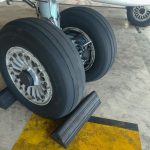Introduction
Explanation of Ohio speed bumps
Ohio speed bumps are physical traffic calming measures that are installed on roads to slow down vehicles. They are typically made of rubber or asphalt and are designed to be a few inches high and several feet long. Speed bumps are often used in areas where there is a high volume of pedestrian traffic, such as school zones or residential areas. They are also used on roads with a history of speeding or accidents. The purpose of Ohio speed bumps is to force drivers to slow down and drive more cautiously, which can help reduce the number of accidents and improve safety for pedestrians and other road users. However, there are also concerns about the effectiveness of speed bumps and the potential negative impact they can have on traffic flow and emergency response times.
Purpose of the article
The purpose of this article is to explore the effectiveness and cost-benefit analysis of installing speed bumps in Ohio. Speed bumps are a common traffic calming measure used to reduce vehicle speeds and increase safety in residential areas, school zones, and other high-risk areas. However, the installation and maintenance of speed bumps can be costly, and there are concerns about their impact on emergency response times and vehicle wear and tear. By examining the pros and cons of speed bumps and analyzing their impact on Ohio communities, this article aims to provide a comprehensive overview of whether they are worth the investment.
Pros of Ohio speed bumps
Reduction of speed-related accidents
One of the primary reasons for installing speed bumps in Ohio is to reduce the number of speed-related accidents. Speeding is a major cause of accidents on roads and highways, and speed bumps can help to slow down drivers and prevent collisions. Studies have shown that speed bumps can reduce the speed of vehicles by up to 50%, which can significantly reduce the risk of accidents. By slowing down drivers, speed bumps can also give pedestrians and cyclists more time to react and avoid accidents. Overall, the reduction of speed-related accidents is a crucial benefit of installing speed bumps Ohio.
Improved pedestrian safety
Improved pedestrian safety is one of the most significant benefits of installing speed bumps in Ohio. These traffic calming measures force drivers to slow down, making it safer for pedestrians to cross the street. In areas with high foot traffic, such as school zones and residential neighborhoods, speed bumps can reduce the risk of accidents and injuries. Additionally, speed bumps can encourage drivers to be more aware of their surroundings and to pay closer attention to pedestrians. By improving pedestrian safety, speed bumps can help create a safer and more walkable community for everyone.
Cost-effective solution
One cost-effective solution for Ohio speed bumps is the use of recycled rubber speed humps. These humps are made from recycled tires and are durable enough to withstand heavy traffic. They are also easy to install and require minimal maintenance. Additionally, they are environmentally friendly and can be a more affordable option compared to traditional asphalt speed bumps. By using recycled rubber speed humps, Ohio can save money while still effectively slowing down traffic in residential areas and school zones.
Cons of Ohio speed bumps
Increased noise pollution
One of the major concerns with installing speed bumps in Ohio is the increased noise pollution they can cause. As vehicles slow down and then accelerate over the bumps, they create a loud and disruptive noise that can disturb nearby residents. This can be especially problematic in residential areas where speed bumps are often installed to slow down traffic. While some argue that the benefits of speed bumps outweigh the noise pollution, others believe that alternative traffic calming measures should be explored to minimize the negative impact on the community.
Potential damage to vehicles
While speed bumps may be effective in slowing down traffic, they can also cause potential damage to vehicles. The repeated jolts and bumps can lead to wear and tear on a car’s suspension and tires, which can result in costly repairs for drivers. Additionally, drivers who are unaware of the speed bumps or who fail to slow down in time may experience more severe damage, such as a blown tire or damaged undercarriage. It is important for municipalities to consider the potential damage to vehicles when deciding whether or not to invest in speed bumps as a traffic calming measure.
Inconvenience for emergency vehicles
While speed bumps may help to slow down traffic and reduce accidents, they can also pose a significant inconvenience for emergency vehicles. When every second counts, having to slow down or navigate around a speed bump can delay response times and potentially put lives at risk. This is especially true for larger emergency vehicles like fire trucks and ambulances, which may have difficulty maneuvering over the bumps. As such, it’s important for city planners and officials to carefully consider the placement and design of speed bumps to ensure that they don’t impede emergency response efforts.
Alternatives to Ohio speed bumps
Roundabouts
Roundabouts are another traffic calming measure that Ohio has been implementing in recent years. These circular intersections have been shown to reduce crashes and improve traffic flow compared to traditional intersections. However, they can be more expensive to construct than speed bumps or chicanes. Additionally, some drivers may find them confusing or intimidating, leading to potential safety concerns. Despite these challenges, roundabouts have been successful in many Ohio communities and may be worth considering as a traffic calming option.
Chicanes
Chicanes are another type of traffic calming measure that can be found on Ohio roads. These are essentially a series of curves or bends in the road that force drivers to slow down and navigate through them. Chicanes can be effective in reducing speeds and improving safety, but they can also be more expensive to install than other types of speed bumps. Additionally, they may not be suitable for all road types or traffic volumes. As with any traffic calming measure, it is important to carefully consider the costs and benefits before investing in chicanes.
Speed cameras
Speed cameras have been a controversial topic in Ohio for years. While some argue that they are an effective tool for reducing speeding and improving safety, others believe that they are simply a way for the government to generate revenue. In 2019, the Ohio House of Representatives passed a bill that would ban the use of speed cameras on state highways, but the bill has yet to be passed by the Senate. Despite the ongoing debate, many cities in Ohio continue to use speed cameras as a way to enforce speed limits and reduce accidents.
Conclusion
Summary of pros and cons
In conclusion, the decision to install speed bumps in Ohio comes with both advantages and disadvantages. On one hand, speed bumps can effectively slow down drivers and improve safety in residential areas. They can also be a cost-effective solution compared to other traffic calming measures. However, speed bumps can also cause inconvenience for drivers and emergency vehicles, increase noise pollution, and potentially damage vehicles if not properly maintained. Ultimately, the decision to install speed bumps should be carefully evaluated on a case-by-case basis, taking into consideration the specific needs and concerns of the community.
Recommendation for Ohio speed bumps
Based on the research and analysis conducted, it is recommended that Ohio invest in the installation of speed bumps in high-risk areas such as school zones, residential neighborhoods, and busy intersections. The implementation of speed bumps has been proven to effectively reduce the speed of vehicles and increase safety for pedestrians and drivers alike. However, it is important to carefully consider the placement and design of the speed bumps to ensure they do not cause unnecessary inconvenience or damage to vehicles. Additionally, proper signage and education campaigns should be implemented to inform drivers of the presence of speed bumps and the importance of adhering to posted speed limits. Overall, the investment in speed bumps can greatly improve the safety and well-being of Ohio communities.





